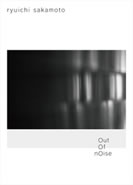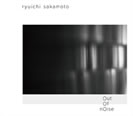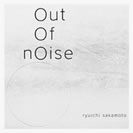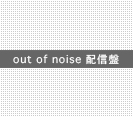Of course, there are songs that are not approached from the noise side. For example, "hibari" at the beginning. The song was inspired by an episode in which the lonely pianist Glenn Gould loved reading Soseki Natsume's "Kusamakura", but by gradually shifting the fragments of the beautiful phrase played on the piano, It succeeds in revealing the noise characteristic of the sound that is not like a piano.
"This song "hibari" originally had a piano phrase that I played improvised, and basically I made it into a loop, but I made a copy and made a slightly changed length and it sounds at the same time. I am doing it. Then, the two gradually slipped off, and once about 4 to 5 minutes, the slips disappeared, and then they slipped again, and they fit again in the last 9 minutes."
You can find such an interesting difference in "composition 0919," which also features a piano. This song, which was also used in mobile phone commercials, is actually made up of only three types of sounds, which are structured so that they can be heard in the music depending on how they are shifted or combined.
“The commercial version has a beat to make it easier to listen to, but this version is what I really wanted to do musically. This is my favorite (laughs). It's the last song in the album, but it's a repeat. I think that you can listen to it naturally by playing it and connecting it to the first song "hibari"."
The other song "to stanford" featuring the piano is not actually his own song, but a song by Kotringo, a female singer-songwriter discovered by Sakamoto.
"I don't cover people's songs very much. What I have done so far is Rolling Stones and Okinawan folk songs... Stones, Okinawan folk songs and Kotringo are great selections (laughs) It's said that the song "to stanford" is "too Sakamoto-like" when asked by the person himself, but I can't hear it that way (laughs). However, it was my favorite song, and I played it at the Roxas Classic Concert last August with two people, but it was a lot of fun, so as it was, as an instrumental song to be played on two pianos I tried covering it."
Speaking of distribution, as it was revealed at a press conference conducted over the Internet at the end of last year, the live tour that is held in conjunction with the release of this album, the entire performance was recorded, and the next day at the iTunes Store Is an epoch-making attempt to be sold for download.
"I think I'll be doing the live 25 times in total. I think there must be something different, but I can't make a certain song so different...I may be able to make a mistake every time (laughs). I've decided to use two pianos, but even so, there are few songs that can be played live on this album (laughs) I can do "to stanford," but I wonder if "hibari" can be done. ...Almost all the rest (laughs). Instead of that, the pamphlet sold at the live venue comes with two CDs, which will probably include a song like this. We have a total of about 30 songs, including the ones we had recorded for the live performances so far, and some new songs we made for Pamphlet.''
Ryuichi Sakamoto continues to challenge what nobody can do yet, both at the recording and at the live. We should be even more proud to be the witnesses of his actions.
text/Shin Kunizaki (Sound & Recording Magazine Editor-in-Chief)


- Full artwork board
- ¥4,500 (tax included)
2009/3/4 release

- Packageless board
- ¥ 1,980 (tax included)
2009/3/4 release

- Analog board
- ¥ 3,990 (tax included)
Released on March 18, 2009

- Distribution board
- 2009/3/4 release
- *High sound quality 320kbps mp3 and 48kHz/24bit AIFF,
We have two types of music files.


